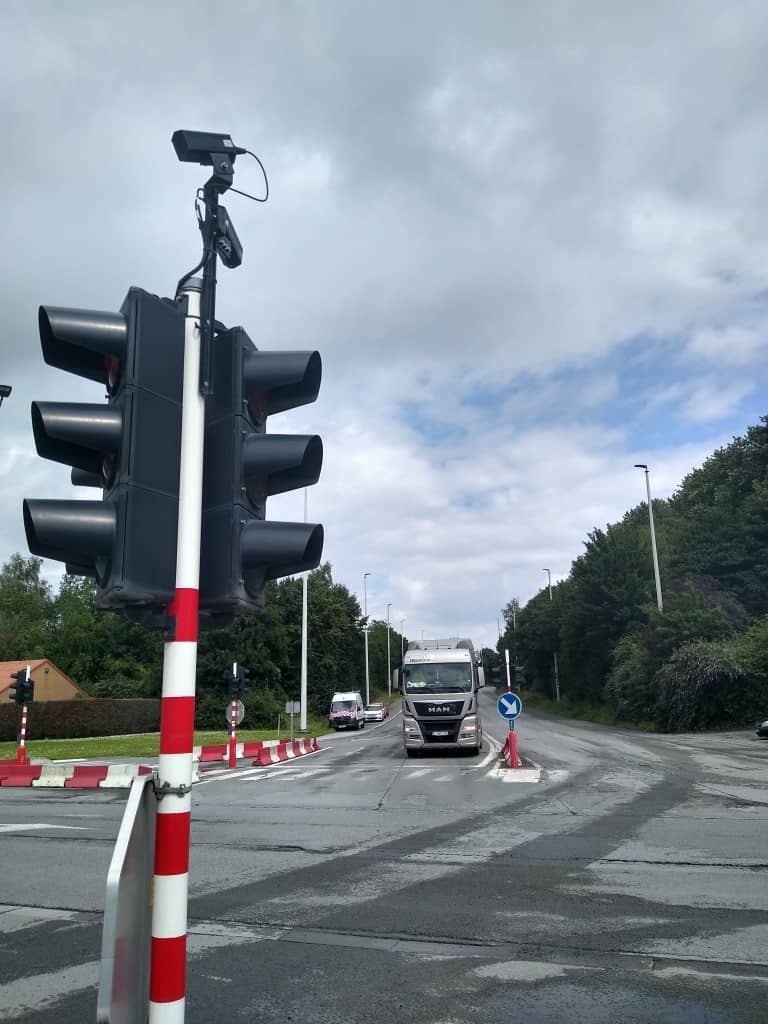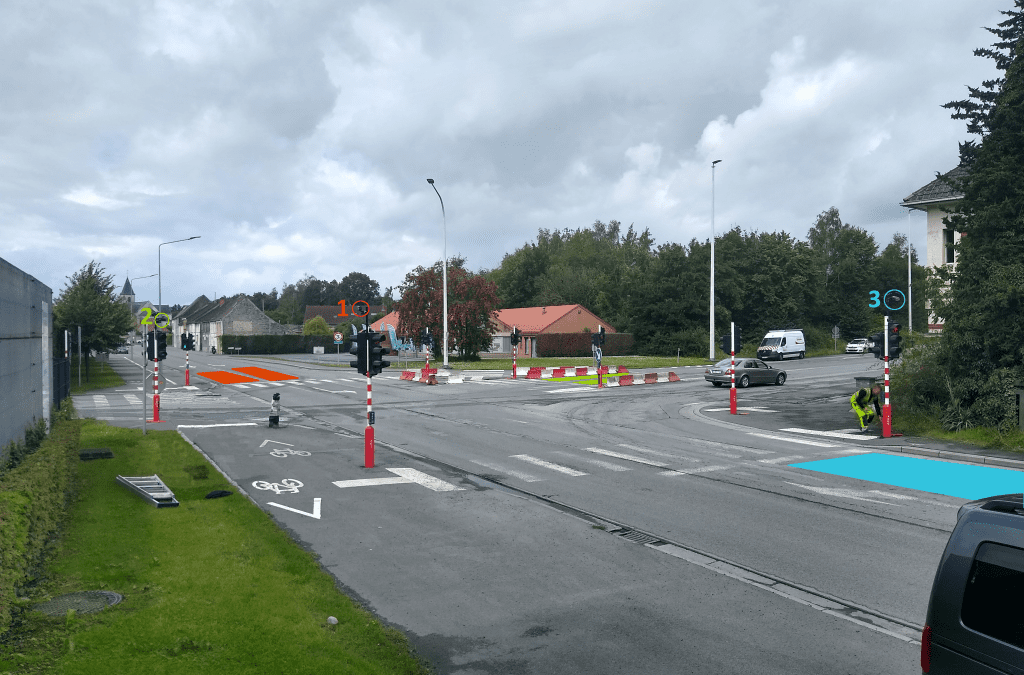The TMB-134 microwave sensor from Icoms Detections can replace up to 9 inductive loops for intersection management. In this article, we provide more details about one particular use case where residents and truck drivers were complaining about the congestion at the traffic lights. No road works were needed, resulting in an unhindered traffic flow even during installation, configuration and commissioning of the detectors.
The road manager had been receiving complaints on how long people were waiting at traffic lights, and how truck drivers were not getting the green light when they were supposed to. The Ministry decided to commission a study to find out how they could improve traffic flow on this important junction which serves a river port and a city of approximately 70 000 inhabitants.
The analysis showed that the in-road loop sensors were defective, resulting in a junction based only on a time schedule, and no more on the actual traffic flows. To solve these problems, the Ministry decided to install above ground sensors on the different branches of the junction so as to detect approaching vehicles to the junction.

Two TMB-134 (depicted as number 1 and 2 on the picture hereabove) and one TMA-122 (depicted as number 3) replace altogether 6 inductive loops.
- TMB-134 nr 1: differentiates between the traffic going to the town center and the traffic coming from the turn left to the highway
- TMB-134 nr 2: differentiates between the trucks that need to enter the river port, the vehicles turning left to the town center and the vehicles turning right
- TMA-122 nr 3: detects approaching vehicles and holds the relay contact as long as the vehicles are in at the stop-line
All the virtual loops created with these above ground sensors detect moving vehicles as well as stopped vehicles. They therefore fully replace the previously installed in-ground sensors which were very sensitive to the heavy-duty trucks causing damages to the loops.
The installation was setup in less than 2 hours, including mounting on the pole and cabling, without civil works nor traffic stopping.
The road manager doesn’t receive any complaints more and the traffic to the port is now fluid and free flowing.

